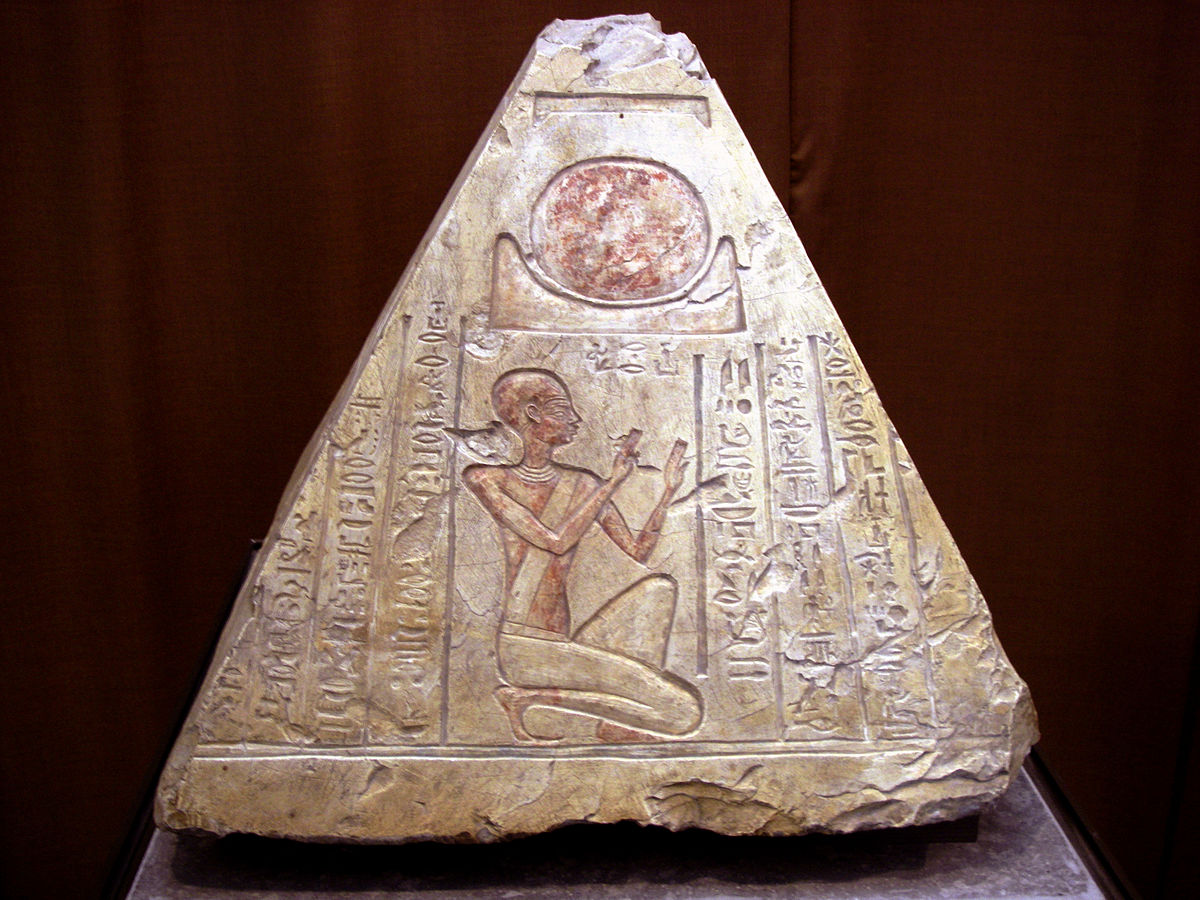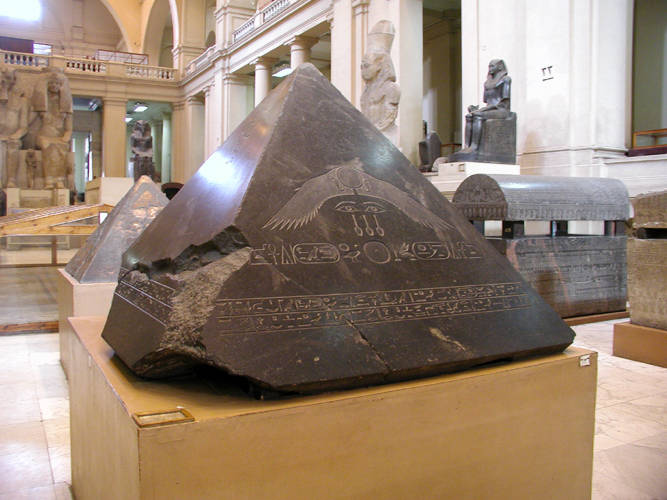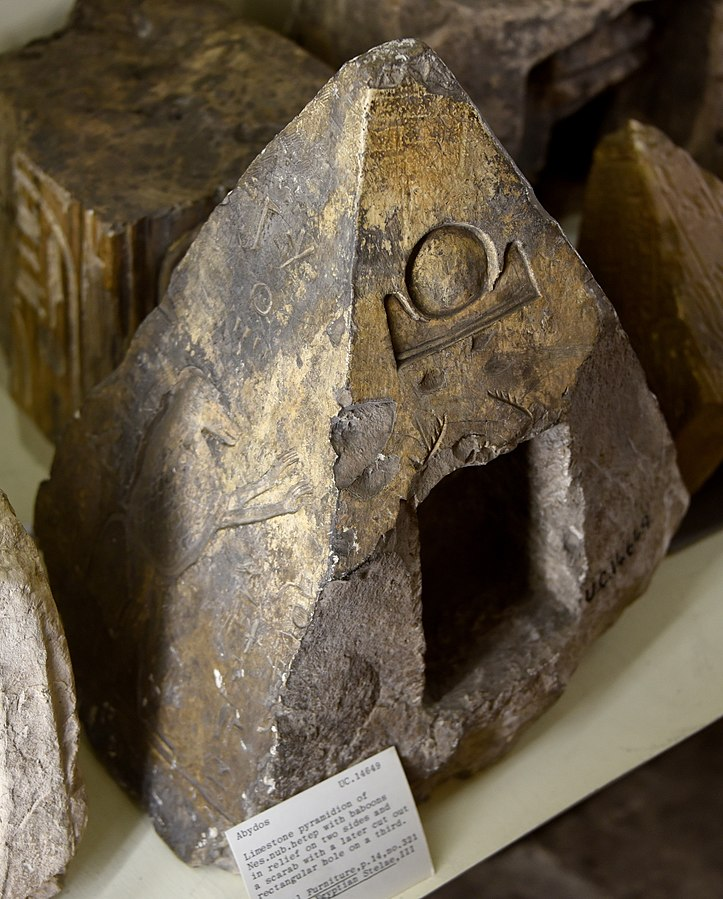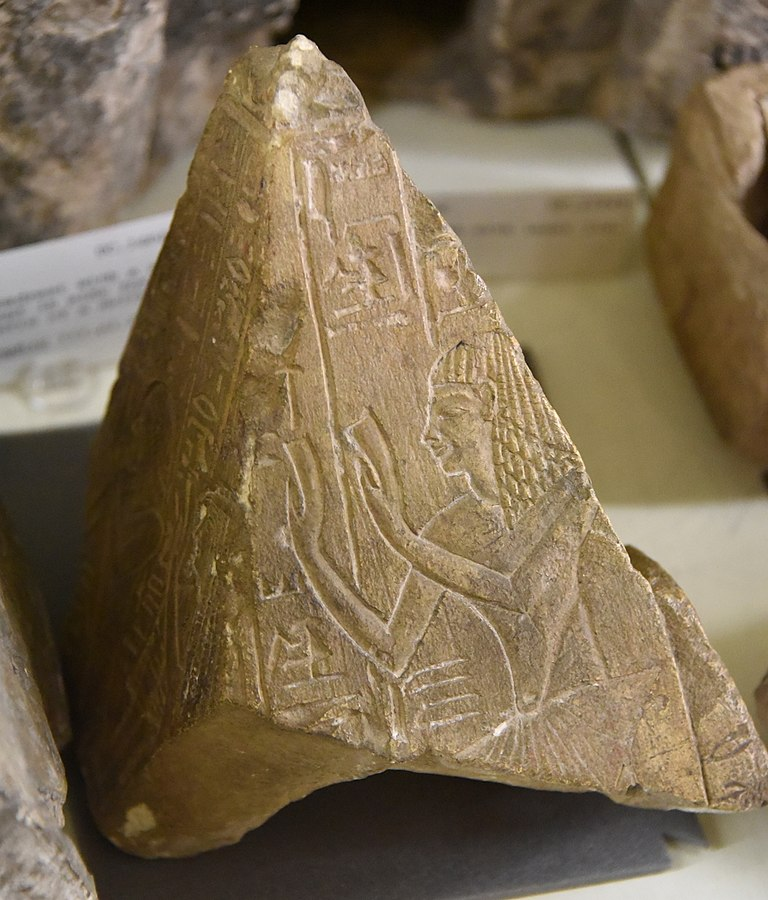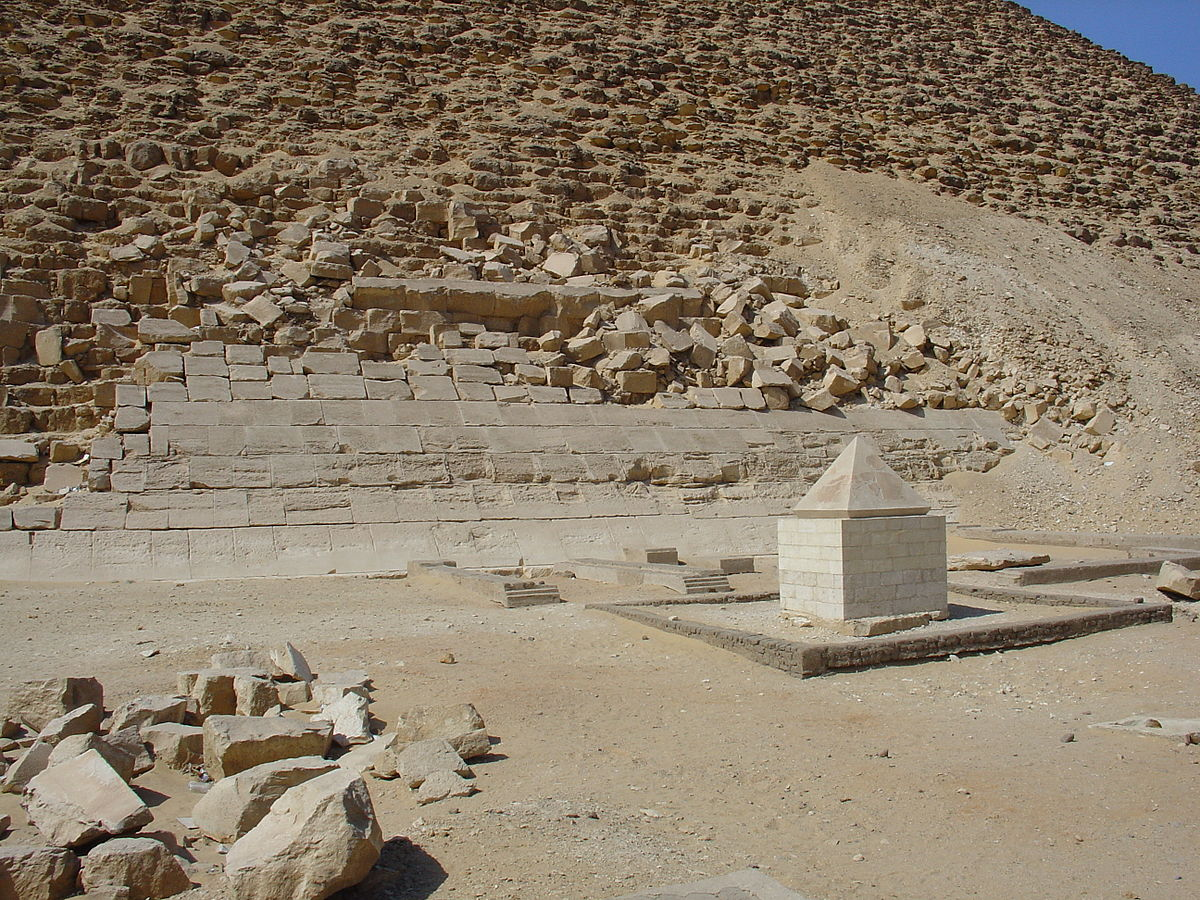A pyramidion is the uppermost piece or capstone of an Egyptian pyramid or obelisk. Speakers of the Ancient Egyptian language referred to pyramidia as benbenet and associated the pyramid as a whole with the sacred benben stone. During Egypt's Old Kingdom, pyramidia were generally made of diorite, granite, or fine limestone, then covered in gold or electrum; during the Middle Kingdom and through the end of the pyramid-building era, they were built from granite. A pyramidion was "covered in gold leaf to reflect the rays of the sun"; during Egypt's Middle Kingdom pyramidia were often "inscribed with royal titles and religious symbols".
Very few pyramidia have survived into modern times. Most of those that remain are made of polished black granite, inscribed with the name of the pyramid's owner. Four pyramidia – the world's largest collection – are housed in the main hall of the Egyptian Museum in Cairo. Among them are the pyramidia from the so-called Black Pyramid of Amenemhat III at Dahshur and of the Pyramid of Khendjer at Saqqara.
A badly damaged white Tura limestone pyramidion, thought to have been made for the Red Pyramid of Sneferu at Dahshur, has been reconstructed and is on open-air display beside that pyramid; it presents a minor mystery, however, as its angle of inclination is steeper than that of the edifice it was apparently built to surmount.


